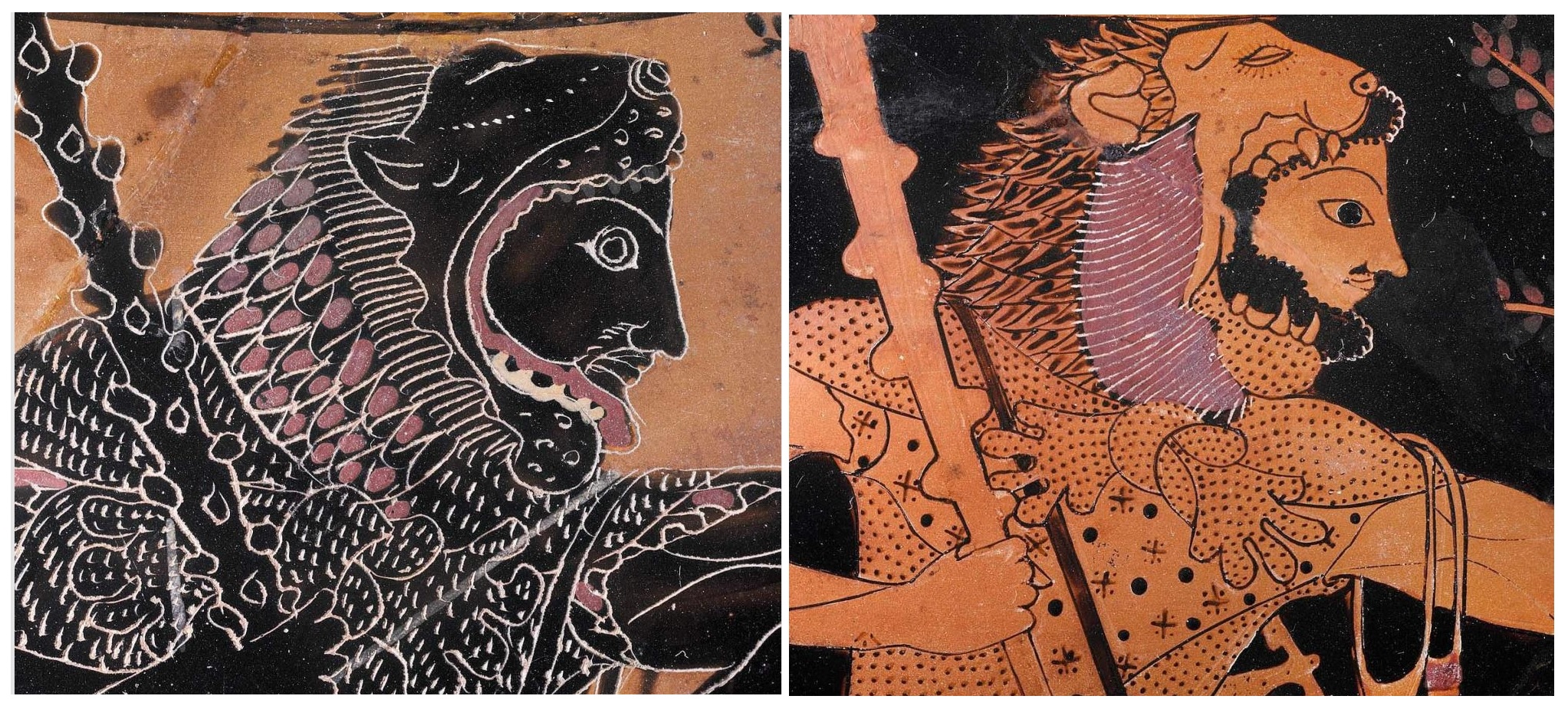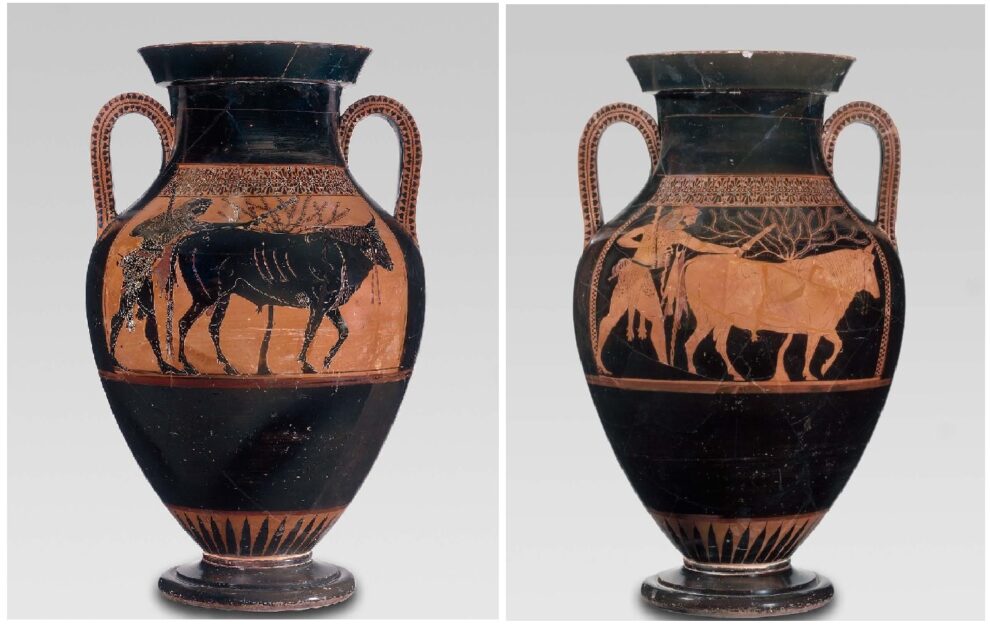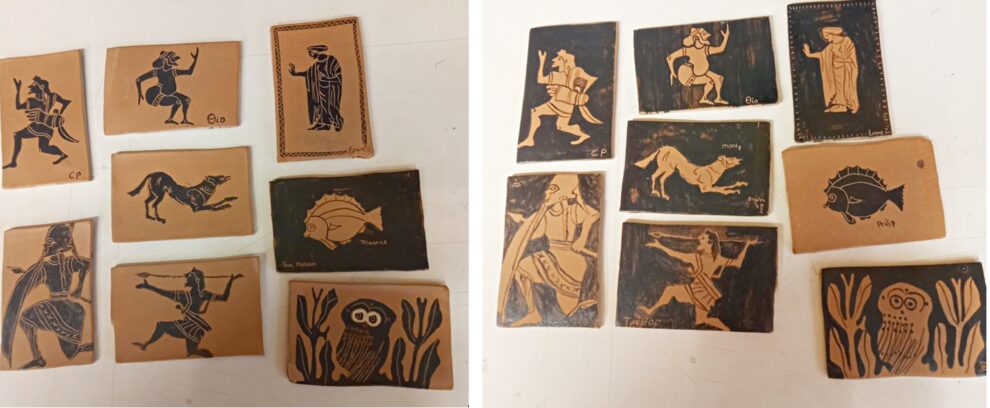
We are wondering if you have ever come across the term “Bilingual Vases”. Might sound strange as we are not referring to languages and people. However, is it that different from a person having two mother tongues?
👉 Let’s try and break down the meaning and you can decide for yourselves!
“Bilingual vases” is a term taken from linguistics and is used metaphorically in vase painting. It describes vases that are painted both in the black-figure and in the red-figure techniques. It also describes the transitional period when the black-figure was gradually replaced in dominance by the red-figure, during the last quarter of the 6th and the very beginning of the 5th century BC.
💡 Mental Exercise for you: Can you detect parallels between a positive/negative image and a bilingual vase? Through vase painting, we can verify that the ancient Greeks were ahead of their time, as with no modern-day technology, and no cameras, they successfully depicted a form of positive/negative on their vases.
🎬 To understand both black-figure and red-figure techniques watch our video ATTIC VASES part 2 at 4.3 minutes – Link
Description of the bilingual amphora with “Heracles driving a bull to sacrifice” in our post with wording from the @mfaBoston
This amphora is decorated on both sides but in different painting techniques. One side has a scene depicted in the Red Figure style, and the other side shows the same scene in the Black Figure style. This type of decoration puts the vase into the so-called Bilingual group. The traditional attributions for the painter is: the Black Figure (side A) is by the Lysippides Painter, and the Red Figure (side B) is by the Andokides Painter.

Both sides depict Herakles driving a bull to sacrifice, past a tree, holding his club in his right hand, and in his left the rope fastened round the horns of the bull, also a bundle of spits. He wears a short tunic (chitoniskos), a lionskin, a belt, has sword and quiver slung, by crossbands, at his left flank, carries two small wineskins, apparently empty, over his left arm. The bull’s head is filleted with colorful ribbons, and the woollen fillet has the form commonly used for this purpose as for others, tied at intervals and the ends splayed.
📷 by @mfaBoston
👉 More bilingual images from the pinakes produced by Harding University students during our 2 hours seminar “Black figure/Red figure ?” on 17th of October 2022

Here’s how to join our private pottery workshops and seminars
▪ Email us at atticblack@thetis.gr
▪ Contact us via our website – Link in Bio
▪ DM us
#atticblack #thetisauthentics #potteryworkshop #potteryseminar #ancientgreekpottery #potteryclass #greekpottery #greekpotteryart #ancientgreekpotter #blackfigure #redfigure #bilingualvase #vasepainting #amphora #potterystudio #athens #athensgreece #potteryart #potterypainting #potteryofinstagram #potteryclasses #athenspottery #greekpotteryart #andokides #ceramicsstudio #ceramicvase #ceramicworkshop #ceramicworkshops #ceramics #ceramicsart
